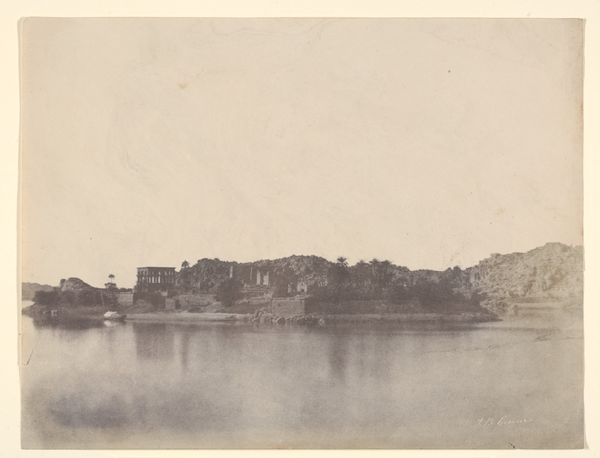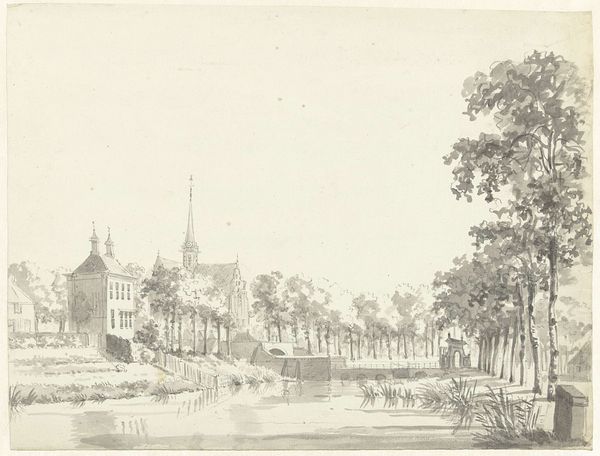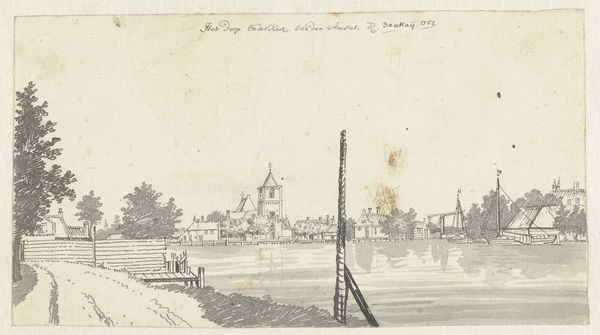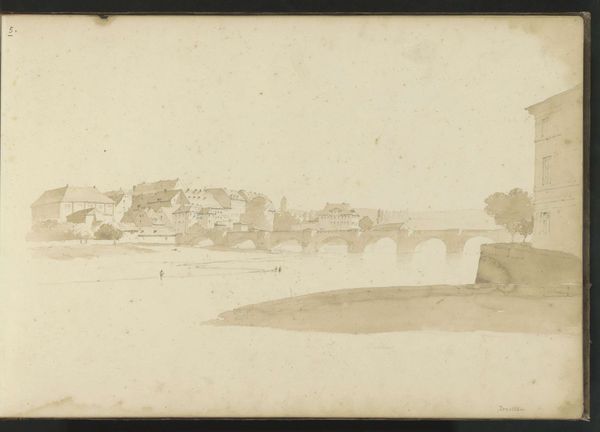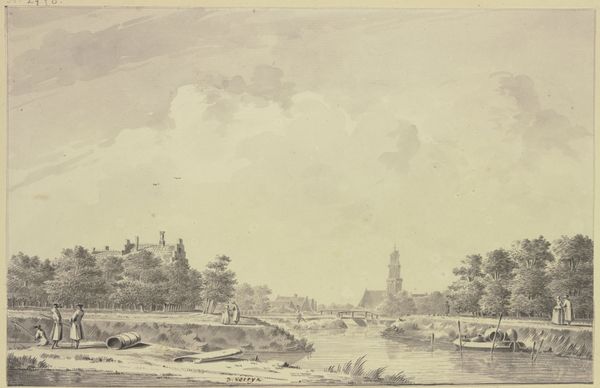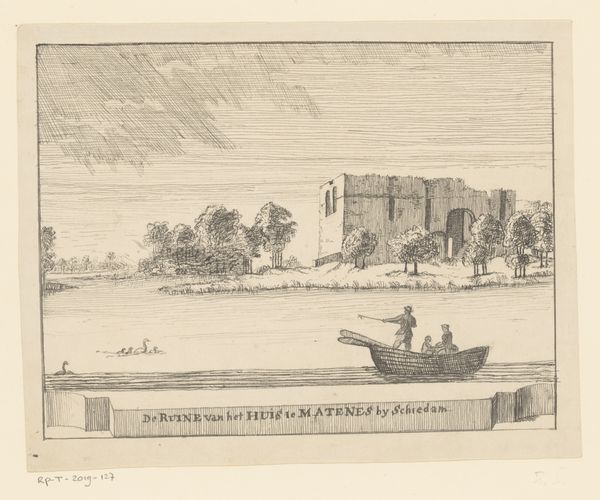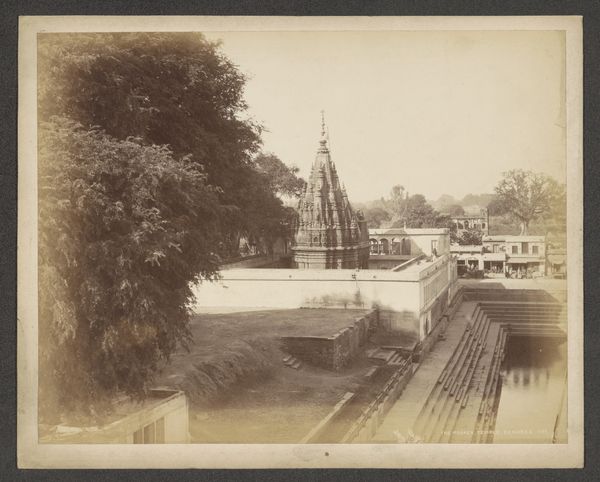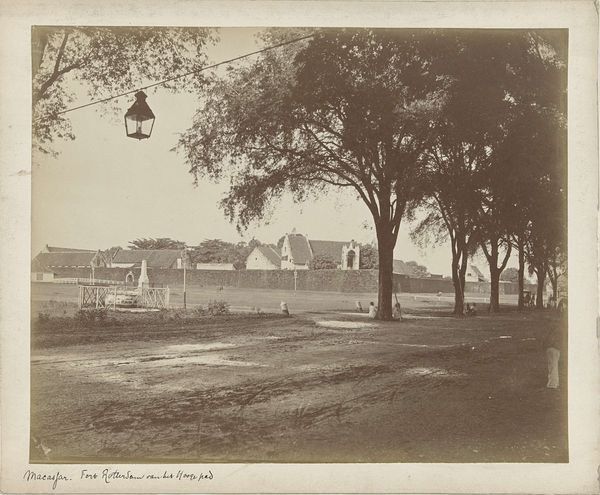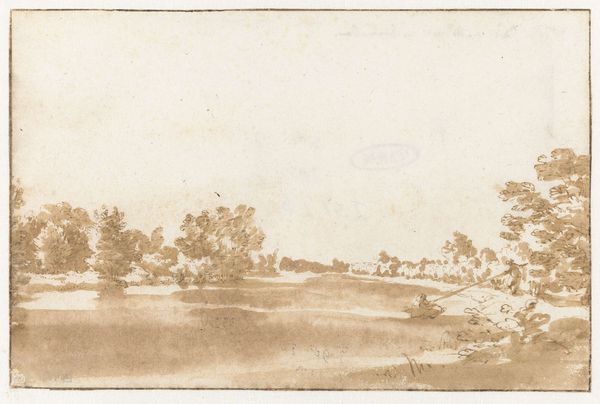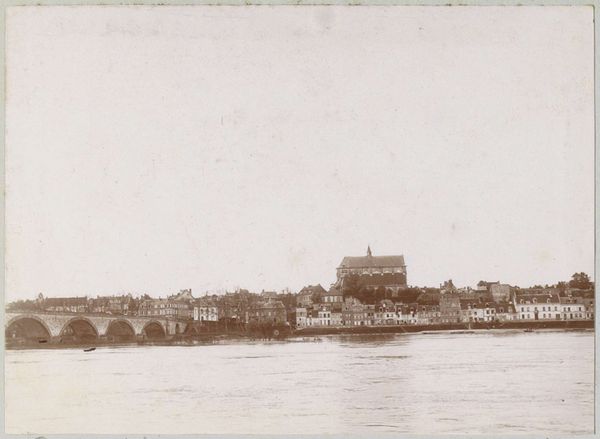
View of the Park at Versailles: Terrace with Urn, Sphinx and Female Statue n.d.
0:00
0:00
drawing, print, etching, paper, ink, chalk, graphite
#
drawing
# print
#
etching
#
landscape
#
perspective
#
paper
#
ink
#
classicism
#
chalk
#
graphite
Dimensions: 224 × 372 mm
Copyright: Public Domain
Curator: What strikes me immediately about Antoine Pierre Mongin’s “View of the Park at Versailles: Terrace with Urn, Sphinx and Female Statue” is how vacant and still it feels, despite depicting such an historically vibrant place. Editor: I see what you mean. The gray washes and the perspective converging in the center do give it an air of classical composure, a sense of imposed order reflecting absolute power. Versailles as a stage for political theater, certainly. Curator: Yes, but there’s a visual language here that speaks beyond mere documentation. Take the sphinx for instance, placed centrally; these hybrid creatures often guard sacred spaces, acting as keepers of knowledge, echoing the mysteries cultivated at court. Editor: Right, sphinxes were a key component of royal iconography for centuries before Versailles. I wonder what this specific visual shorthand meant for contemporary audiences... Beyond status, what kind of cultural messaging was the artist engaging in here? Curator: Possibly reinforcing the continuity of power and wisdom associated with the monarchy, harking back to Egyptian symbolism, then revived in the Renaissance. It gives a sense of timelessness. It's interesting, this piece uses graphite, chalk, ink and etching on paper to portray an explicitly grand scene with rather muted emotional tenor. Editor: The muted quality perhaps reflects something of the political realities of its time as well. While it lacks a precise date, such park views served both to idealize royal authority, and to subtly reinforce notions of control through manicured landscapes—appealing, yet undeniably artificial. Curator: Definitely. There's also that lone female statue... isolated, perhaps representing a muse or a classical ideal. Its prominence seems intentional, and these recurring symbols provided an unspoken script of power. Editor: Well put. Overall, this work offers a lens onto how the monarchy wanted to be seen, and perhaps how viewers were conditioned to interpret such visual narratives. Curator: For me, I will keep the mystery held within its subdued emotional landscape; each component quietly contributing to the cultural symbolism. Editor: Indeed, considering both the overt message and the subtler cultural context can illuminate the complex dynamic between power, representation, and perception.
Comments
No comments
Be the first to comment and join the conversation on the ultimate creative platform.
